Hou Hsiao-Hsien @75: New Millennium (2001-2022)
 Tuesday, April 12, 2022 at 7:19PM
Tuesday, April 12, 2022 at 7:19PM The conclusion of a four part series by Cláudio Alves
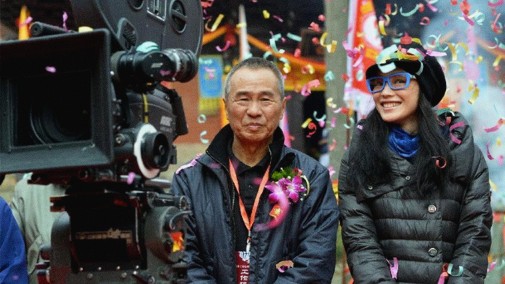
In the cinema of Hou Hsiao-Hsien, the 21st century started with a neon dream. The camera follows Shu Qi's Vicky as she runs through a Taipei tunnel, lights flickering above. Everything happens in slow-motion, flickers turn into waves and the actress's movement makes a strange unnatural dance. She looks back at us, hair flying in a cloud of black tendrils, her eyes asking us to follow her down the tunnel, like Alice down the rabbit hole. It's a hypnotic sight, made more seductive by the music of Lim Giong, house beats and techno dronings that transform the screen into a pulsing heart.
2001's Millennium Mambo fulfills the formalistic promise of Daughter of the Nile, transcending Goodbye South, Goodbye's tethering to material truth. Like its protagonist, the film looks back at its director's history while moving forward to an unknown future. It's the start of a new chapter for Hou Hsiao-Hsien…
 MILLENNIUM MAMBO (2001)
MILLENNIUM MAMBO (2001)
Born from the influence of screenwriter Chu Tian-Wen and his new muse Shu Qi, all of the director's 21st-century features would focus on women. Millennium Mambo, in particular, asks the audience to dive deep into an ambivalent feminine psyche that lives in the moment to an extreme degree. She's a heroine of the now while also living in the before. The occasional voice-over regards the young woman as something that's already ceased to be, the memory of an older narrator.
She's present, past, and future all at the same time. She's also an embodiment of Millennium Mambo as a whole, perchance Hou Hsiao-Hsien's entire oeuvre. In other words, rather than looking down upon its subject, these Taiwanese youngsters' clubbing sub-culture, Millennium Mambo and its auteur approach them as reflections, mirrors. There's little judgment in their gaze. Instead, there's recognition and a sort of curiosity that looks inward.
Perhaps because of it, the film is even more narratively amorphous than Hou's previous experiments. Its sensorial attributes were, in contrast, heightened. Consider, for instance, that Millennium Mambo's sole victory out of Cannes was a technical prize for Duu-Chih Tu's sound design. As the early days of the millennium unfolded, it seemed as if the director were testing the limits of fiction cinema and its audience, seeing how far one can push the storytelling model until there's no story at all.
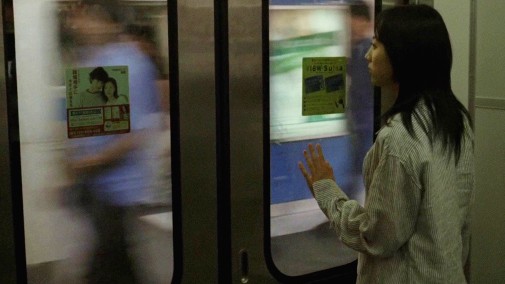 CAFÉ LUMIÈRE (2003)
CAFÉ LUMIÈRE (2003)
"No plot, just vibes" might be a good way to characterize Millennium Mambo and its follow-up, Café Lumière. Made for the Yasujiro Ozu centenary at the request of Shochiku Studio, the latter film marked another step towards internationalization for Hou Hsiao-Hsien's cinema. Shot in Japan, Café Lumière finds the director paying direct homage to one of his most significant influences, trying to translate and transform Ozu's style into his own cinematic idioms.
The result is more fascinating than fulfilling, focusing, once more, on a modern young woman caught in a valley of indecision. Repeating character beats from such classics as Tokyo Story, Hou's strategy works best when he abandons any Ozuian gestures to focus on his brand of contemplative cinema. Romance blossoming from a shared love, mayhap obsession, with trains is an odd development, but it also breathes life into the film.
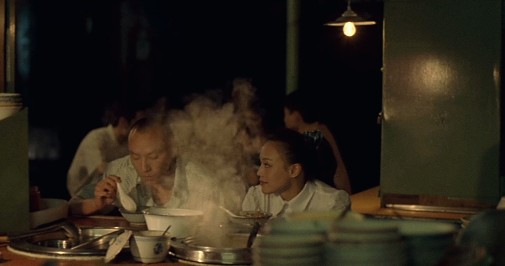
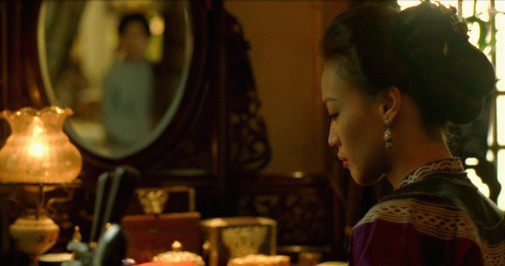
 THREE TIMES (2005)
THREE TIMES (2005)
If Café Lumière asked generosity from its viewer, a willingness to tune into a specific wavelength, Three Times demanded knowledge of Hou's oeuvre and history. Or maybe not, as the case may be. When I first watched that 2005 tryptic, I had no idea what works it was referencing, and I still found myself besotted by its wonders. Its combined thesis rang true - people and how one relates to the other are defined by the time and place they inhabit.
Three Times comprises three episodes, love stories played by the same actors. A Time for Love is set in 1966 and concerns the mutual attraction between a young soldier and the beautiful pool hall hostess who catches his eye. A Time for Freedom takes us back to 1911, to the Japanese occupation, when a courtesan yearns for liberty and love from a freedom fighter. Finally, A Time for Youth drops us in contemporary Taipei, where a singer feels torn between her girlfriend and a photographer lover.
The whole exercise harkens back to the anthological films that kickstarted the Taiwan New Cinema movement, while each time unfolds in a different idiom and refers to a distinct era in the evolution of Hou's cinema. Love is all about the Hokkien-spoken autobiographies that took up a significant part of the director's 80s output. However, the guiding style is one of roving cameras, a technique he'd only perfect after those memoirist films. Freedom is a riff on the same milieu of Flowers of Shanghai.
Furthermore, its use of intertitles in place of dialogue is taken from A City of Sadness's mute protagonist, also borrowing that film's vital purpose of examining Taiwanese history through a sociopolitical prism. Freedom is a miniature version of the historical trilogy of the early 90s. As for Youth, it combines elements from Hou's many films about the nation's younger generations, their sense of ennui and urban displacement. It's Daughter of the Nile and Millennium Mambo's lost child.
 FLIGHT OF THE RED BALLOON (2007)
FLIGHT OF THE RED BALLOON (2007)
Hou Hsiao-Hsien's next project would take him across the world to France, where he made a film in reference to another filmmaker of yore. This time, instead of Ozu, it was Albert Lamorisse. Flight of the Red Balloon is a meditation on 1956's The Red Balloon and a study on how this Taiwanese master's cinema could shapeshift into a new French paradigm. Juliette Binoche plays a single mother and puppetmaster whose young boy is taken care of by a Chinese au pair with filmmaking aspirations.
The picture is an ongoing negotiation between naturalistic interplay and performance, unconnected moments, and fanciful abstractions. While not for everyone, there's much to love about the film's simple luminosity, especially for Binoche fans who'll find one of the actress's loosest and best characterizations. Most of all, Flight of the Red Balloon enchants for its quiet musicality. It's a quality contained within the Parisian ambiance and rhythmic variation, how transitional passages linger and scenes sing a peaceful lullaby.
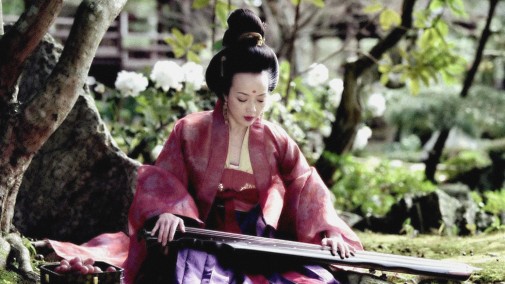 THE ASSASSIN (2015)
THE ASSASSIN (2015)
2015's The Assassin is even more exemplary in its silent musicality, taking Hou Hsiao-Hsien's cinema to a place of depurated movements, cinema as a study in changing rhythms and languid beauty. Shu Qi stars as the titular character, a sort of murderous Hamlet who spends the entirety of her film questioning fealties, her place in the world, the value of life as judged by different codes of moral duty. But, more importantly, she's a consummate observer who hides in the shadows before striking in flurries of lightning-fast aggression.
Rather than cerebral as some describe it, this wuxia experiment is one of Hou's most sensorial pictures, all about the primordial appreciation of audiovisual contrasts. It's an experience working on a paradigm where humanity is sublimated into masses of color and darkness, varying velocities, juxtapositions of silkscreens, camera choreography as a parallel dance to the rustling skirts worn by feudal concubines. The first Hou Hsiao-Hsien I ever saw and the only one I got to appreciate in theatres, The Assassin has a special place in my heart, foundational to my understanding of cinema.
The seventh art is not about storytelling, not necessarily. Instead, it's about the moving image, a simple, nearly primitive perception where time and vision intersect. A film like The Assassin or, indeed, all of Hou Hsiao-Hsien's oeuvre might intimidate the viewer and make them confront it as a puzzle. However, cinema isn't meant to be solved. Instead, it should be felt, experienced in its basest nature. Sometimes, to better enjoy it, one must surrender to cinema and trust its journey. Thank you, Hou Hsiao-Hsien, for teaching me that.
 THE ASSASSIN (2015)
THE ASSASSIN (2015)
For now, The Assassin is the director's last picture. However, Shulan River – about a river goddess whose waterways have been turned into modern roads - has been announced as his next project. I don't know about you, but I can't wait to see where Hou Hsiao-Hsien takes me next.



Reader Comments (1)
In some ways I think this is the most fascinating era of Hou’s career. I remember watching Millennium Mambo with my wife (albeit before we were married) and her saying, “This barely feels like a movie, and I love it.” For a while the featured IMDb user review for The Assassin (not that you should necessarily pay attention to that) was a negative review that had a ton of “helpful” votes, which made me sad because it actually insinuated that movies like that served no purpose. Clearly these films aren’t for everyone, but that’s because, as my wife expressed all those years ago, they’re not functioning in the same way that most other films are. For anyone who has a rigid defined of what a movie is supposed to be, Hou is simply doing something else, and I love him for it. These are meditative poems through moving images.